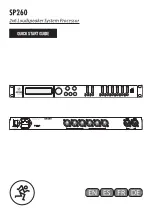
Signal Generator Settings
R&S
®
SGT100A
223
User Manual 1176.8674.02 ─ 07
The power viewer function uses
averaging filters
to reduce the fluctuations of the
measurement result to the desired extent. Common sources of fluctuations are inher-
ent noise of the measuring instrument, modulation of the measurement signal or influ-
ences from the superposition of adjacent carriers. Common method for achieving more
stable display is the use of longer measurements. The term longer measurements do
not mean that it takes longer to display a new result. The term refers to the time it
takes for the result to settle when the power varies.
Measurements are continuously repeated in a predefined time window. The measure-
ment result is obtained by averaging the measured values for the last 2N time win-
dows. This approach is referred as a
two-step averaging process
.
The factor of 2 in the formula arises because the output signals from the microwave
detector are chopped at the same rate as the time windows to suppress low-frequency
noise. An independent measured value can only be obtained from two consecutive val-
ues.
The variable N in the formula indicates the
filter length
. The filter length then directly
influences the measurement time. The filter length can be selected automatically or it
can be manually set to a fixed value.
Follow the following general recommendation to find out the
optimum filter length
:
●
Always start a measurement in auto mode ("Filter > Auto")
Check if the measurement results are sufficient.
●
If the power is not constant, select the filter length manually ("Filter > User")
Trigger the "Auto Once" function to search for the optimum filter length for the cur-
rent measurement conditions.
The estimated value is indicated as filter length.
●
If the target measurement accuracy is known value, select "Filter > Fixed Noise"
The averaging factor is selected automatically and so that the sensor's intrinsic
noise (two standard deviations) does not exceed the specified noise content.
●
Different sensor types achieve the same filtering result with different filter lengths
and time window values.
The time window length depends on the sensor type:
–
For most sensors, it is fixed to 20 ms.
–
For the R&S NRP-Z81 sensor, it is 10
μ
s.
The R&S NRP-Z81 uses filter length that is 1000 times larger than the filter
length for other sensors.
About zeroing
Activates the auto zero function.
Zeroing calibrates the external power sensor by adjusting its reading at zero signal
power. For this purpose, the RF power source must be switched off or disconnected
from the sensor. If a Rohde
&
Schwarz power sensor receives an input power during
the zeroing process, it aborts zeroing and generates an error message. Zeroing takes
a few seconds, depending on the sensor model. Refer to the documentation of your
power sensor for more information.
Tips for zeroing
RF Settings
















































